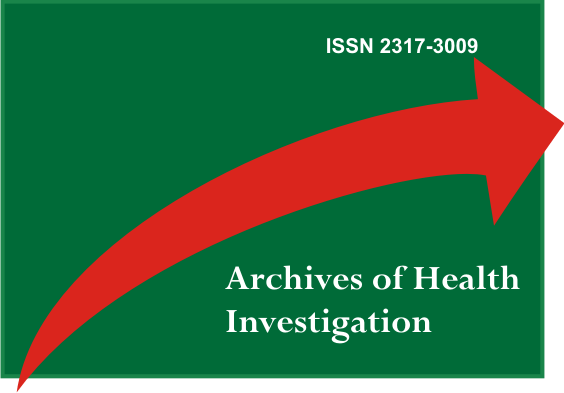Wettability behavior of nanotubular TiO2 intended for biomedical applications
Abstract
Nanotubes have been subject of studies with regard to their ability to promote differentiation of several cells lines. Nanotube have been used to increase the roughness of the implant surfaces and to improve bone tissue integration on dental implant. In this study TiO2nanotube layer prepared by anodic oxidation was evaluated. Nanotube formation was carried out using Glycerol-H2O DI(50-50 v/v)+NH4F(0,5 a 1,5% and 10-30V) for 1-3 hours at 37ºC. After nanostructure formation the topography of surface was observed using field-emission-scanning-microscope (FE-SEM). Contact angle was evaluated on the anodized and non-anodized surfaces using a water contact angle goniometer in sessile drop mode with 5 μL drops. In the case of nanotube formation and no treatment surface were presented 39,1° and 75,9°, respectively. The contact angle describing the wettability of the surface is enhanced, more hydrophilic, on the nanotube surfaces, which can be advantageous for enhancing protein adsorption and cell adhesion.Descriptors: Titanium; Nanotubes; Wettability.
Downloads
References
Alves-Rezende MCR, Bertoz APM, Grandini CR, Louzada MJQ, Santos APA, Capalbo BC, Alves Claro APR. Osseointegração de Implantes Instalados sem Estabilidade Primária: o Papel dos Materiais à Base de Fibrina e Fosfato de Cálcio Arch. Health Invest.2012;1(1): 33-40.
Alves Rezende MCR, Dekon SFC, Grandini CR, Bertoz APM, Alves-Claro APR. Tratamento de superfície de implantes dentários: SBF. Rev Odontol Araçatuba. 2011; 32:38-43.
Capellato P, Escada AL, Popat KC, Claro AP. Interaction between mesenchymal stem cells and Ti-30Ta alloy after surface treatment. J Biomed Mater Res A. 2014;102(7):2147-56.
Gerber J, Wenaweser D, Heutz-Mayfield J, Lang NP, Persson GR. Comparison of bacterial plaque samples from titanium implant and tooth surfaces by different methods. Clin Oral Impl Res. 2006;17:1–7.
Bornstein MM, Schmid B, Lussi A, Belser VC, Buser D. Early loading of non-submerged titanium implants with a sandblasted and acid-etched surface 5-year results of a prospective study in partially edentulous patients. Clin Oral Impl Res. 2005;16:631–8.
Anil S, Anand PS, Alghamdi H, Jansen JA. Dental Implant Surface Enhancement and Osseointegration, Implant Dentistry - A Rapidly Evolving Practice, Prof. Ilser Turkyilmaz (Ed.), ISBN: 978-953-307-658-4, InTech, DOI: 10.5772/16475. Available from: http:// www. intechopen. com/ books/ implant-dentistry -a- rapidly- evolving-practice/ dental-implant-surface-enhancement- and-osseointegration
Escada AL, Machado JP, Schneider SG, Rezende MC, Claro AP. Biomimetic calcium phosphate coating on Ti-7.5Mo alloy for dental application J Mater Sci: Mater Med. 2011;22(11):2457-65.
Das K, Bose S, Bandyopadhyay A. TiO2 nanotubes on Ti: Influence of nanoscale morphology on bone cell-materials interaction. J Biom Mat Res A. 2009; 90:225-37.
Brammer KS, Frandsen CJ, Jin S. TiO2 nanotubes for bone regeneration Trends Biotechmol. 2012; 30:315-22.
Popat KC, Leoni L, Grimes CA, Desai TA. Influence of engineered titania nanotubular surfaces on bone cells. Biomaterials. 2007; 28:3188-97
Mutreja I, Kumar D, Boyd AR, Meenan BJ. Titania nanotube porosity controls dissolution rate of sputter deposited calcium phosphate (CaP) thin film coatings RSC Adv. 2013; 3:11263-73
Park IS, Yang EJ, Bae TS. Effect of cyclic precalcification of nanotubular TiO2 layer on the bioactivity of titanium implant. Biomed Res Int. 2013; 293627. doi: 10.1155/ 2013/293627.
Park J, Bauer S, Von der Mark K, Schmuki P, Nanosize and vitality: TiO2 nanotube diameter directs cell fate. NanoLetters. 2007; 7:1686–91.
Zhao L, Mei S, Chu PK, Zhang Y, Wu Z . The influence of hierarchical hybrid micro/nano-textured titanium surface with titania nanotubes on osteoblast functions. Biomaterials. 2010; 31:5072–82, 2010.
Jeong YH, Ban JS, Choe HC: Surface observation of nanotube/micropit formed Ti-Nb-xZr alloy for biocompatibility. J Nanosci Nanotechnol. 2013;13(3):1706-9
Grassi S, Piatelli A, de Figueiredo LC, Feres M, de Melo L, Iezzi G, Alba RC, Shibli JA. Histologic evaluation of early human bone response to different implant surfaces. J Periodontol. 2006;77:1736:43
Buser D, Broggini N, Wieland M, Schenk RK, Denzer AJ, Cochran DL, Hoffmann B, Lussi A, Steinemann SG. Enhanced bone apposition to a chemically modified SLA titanium surface. J Dent Res. 2994; 83, 529-33.
Cochran DL, Schenk RK, Lussi A, Higginbottom FL, Buser D. Bone response to unloaded and loaded titanium implants with a sandblasted and acid-etched surface: a histometric study in the canine mandible.J Biomed Mat Res. 1998; 40:1-11.
Alves Claro APR, Oliveira JAG, Escada ALA, Carvalho LMF, Louzada MJQ, Alves Rezende MCR. Histological Analysis of the Osseointegration of Ti-30Ta Dental Implants After Surface Treatment, in: A. Öchsner, L.F.M. Silva, H. Altenbach (Eds.), Characterization and Development of Biosystems and Biomaterials, Springer, Berlim, 2013, pp.175-182.
de Oliveira JA, do Amaral Escada AL, Alves Rezende MC, Mathor MB, Alves Claro AP. Analysis of the effects of irradiation in osseointegrated dental implants, Clin Oral Implants Res.2012;23(4):511-4.


